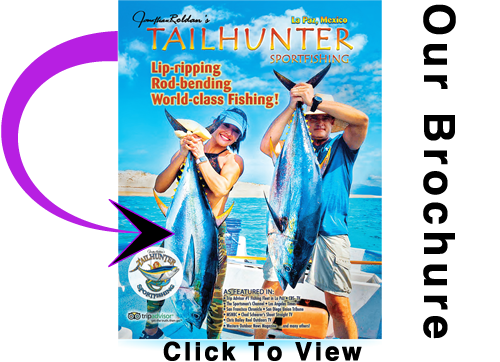 PHOTO 3: POMPANO
PHOTO 3: POMPANO
Originally published in Western Outdoors Magazine
A lonely stretch of pebbled sand beach. Small waves rolling and swirling around your ankles. The cast. The arc of lure and line through the air landing with a minute splash where the darker blue water fingers up to the shallows. The retrieve. The bump.
Stop. Retrieve again. Three cranks. Another bump and this time the reel handle freezes in mid-turn and the rod arches as a heavy silver body launches itself and lands with a flat whoosh. The fish burrows down. The angler leans in for the hookset and…
The lure pulls loose and the line flies back as rod and angler go from tense exhilaration to relaxed disappointment. The lure flips back and hits the water. The angler cranks once and Zzzzzzzzzzz….hit again! With all the slack line, it’s impossible to set the hook and again, the rod limps and angler grins.
But the lure is still out there and this time a surging “V” of water towards the lure now only yards in front of the angler. And before he can crank again, WHAM! Hookset and stick! This time it’s fish on and the slugger surges up the beach then cuts back towards deeper water in a bulldogged effort to snap the light spinning rod.
A lot of cabin-fever-bound folks sit home during the cooler months of spring gnashing their teeth; watching their old fishing videos; and generally chomping at the bit for the sun to start warming the Baja so they can chase tuna, dorado, marlin and other glamour fish. Counting the days…
But the Baja spring offers a type of fishing much overlooked, but encompassing several of my favorite things. One is light tackle fishing. The other is fishing the many members of the jack family. It’s also relatively cheap and easy. It’s a heady combination!
Listen, if a local kid with some old fishing line wound around a beer can and using a spark plug and rusty hook can do it, this should be as easy as dipping a tortilla chip into salsa. Right?
It’s definitely not gear intensive. Can you say Tom Sawyer with a bobber? Ok, it’s about two steps above that. If you can snag the trout or bass rod your kid forgot in the garage, you’re ready to charge. You know, it was the one you bought two Christmas’s ago that came wrapped in cellophane that had your kid all fired up until the kid unwrapped the iPod the grandparents gave. That was that. And the rod migrated under the bed and finally into the garage.
All the better if you have something from your local Walmart / K-Mart/ Target or similar. Like I said, we’re not talking breaking the bank. My own shore rod cost me about 30 bucks. The reel about the same. It has 10 pound test on it. It’s about a 7 footer with a light enough tip to cast the little batch of lures I carry in a plastic box that fits in my pocket or backpack.
Lures consist of an assortment of shiny things and rubbery creations. I like shiny spoons and chrome lures that resemble the small shiny baitfish that hang out along beaches and rocks. Perhaps a heavy popper and a few small castable crankbaits are also in there.
The plastics consist of smaller swim and jerk baits. There’s some new ones that are so realistically patterned after baitfish, I’m half-tempted to put them in a live baitwell. A few grub and curly tails for good measure get tossed in or ones that look like small shrimp or crabs. If they have a little sparkle in them, all the better.
Colors should resemble what’s out there. If you see or know of a particular baitfish, then copy it. If there’s sand crabs or other mollusks or shellfish around ditto. As a personal preference, I don’t know why motor-oil colored plastics have always been effective for me.
Listen, don’t go nuts on this. Down boy. I know we all love to find reasons to go to our tackle show “on a mission.” But, even just a handful of this terminal tackle will be fine.
The rest of my stuff is what I wear daily anyway. I always carry a sweatshirt or windbreaker I can take off and wrap around myself. It can be breezy this time of year.
The rest of me is t-shirts, shorts and either I’m barefooted or have flip-flops or some kind of footwear I don’t mind getting wet and sandy. Don’t forget the wide-brimmed hat. Pack some dikes and either pliers or surgical hemostats and we’re off to see the lizard!
Do I need a boat? Depending on where you are and how much time you have, a boat, like a panga, kayak or other shallow draft inshore craft is a plus. It will help you cover more water and access areas you can’t hit from shore, but it’s up to you. You certainly don’t need a cruiser for this.
And that’s the other attractive part of this. You don’t need to jam 30 miles offshore to get your jollies! Walk out your hotel door. Take a taxi or walk down the beach. Head to the local marina. Find a breakwater or rocky point.
Incoming and outgoing tides are best, but watch the waters. Swirls, sandbars, underwater structure, birds working or bird droppings concentrated around certain rocks are all indications of fishy waters.
And what of the performers?
That’s the best part. Some of them are probably the most ignored, but best fighting gamefish available in the Baja. Most are probably not great table fare, but make up for it in attitude and feistiness.
Along the shores, you can expect, huge needlefish and trumpets, sergeant-majors, bass, barracuda and a host of others. If you’re fishing anywhere near reef structure, there are a myriad of “aquarium” fish like parrotfish, sheephead and snapper that will drag you back to the rocks.
Around more man-made structure like pilings and vessels, look for snook, pargo, mackerel, halibut, corvine, mullet, ladyfish and others. Don’t let the names of any of these put you off. I’ve seen 20 pounders get hooked in some of the most inane places.
However, my favorite are the jacks. Talk about sluggers. Perhaps no inshore fish can compare with sheer tenacity once hooked. Heck, just watching them feed and terrorize bait can be quite a lesson in aggression. There’s a reason they have been grouped as the “Baja Bullies.” It’s a rogue’s gallery. Some better known than others.
Probably the most exotic and well known are the roosterfish (pez gallo). Flat and full-bodied with their tell-tale dorsal, they swim solo and in schools. This is one fish you might have an advantage being in a panga. These bad-boys move following their bait or whim. They cover a lot of water so moving up and down the beach has it’s benefits. You can often see them. Their dark bodies contrast well against white sand bottoms.
If you’re lucky you can see them schooled up next to shore. They’ll park themselves in certain holes surround by rocks or other structure, indentations in sand or other shelter.
Don’t be fooled. Roosters get big. The world record of 114 pounds was caught right off the beach. There are plenty of 5-20 pounders along the shore but fish in the 40-80 pound class are not uncommon and I’ve been spooled or broken off many times on fish I just couldn’t stop and had no business trying to tame on my spinning rod. But what a kick!
Locals like them, but generally it’s an acquired taste so let them go. If you want one for the table, make it a small one. The meat is pink and not too bad. Larger than that and the meat is dark and stringy.
Their cousins are not quite as big, but can be just as sporting. More common than the roosters are the jack crevalle. Imagine a rooster with a more oval body sans the jester hat dorsal fin of a roosterfish and you get the notorious jack.
A 10-15 pound fish is a bruiser. Hook a twenty pounder and you’re in for a knock-down battle with the odds against you! These guys often move in big schools. Hook one and you can stay there all day losing tackle. I’ve been diving and seen schools with thousands of jacks balled up. Mexicans call them “toros” (bulls) and it’s well deserved. Poor eating so release them.
Better eating…in fact…incredible eating are the pompano. Big chunks, breaded and deep fried served with fresh limes or made into ceviche are a delicacy. Much like their rooster and jack cousins, they are again a flatish body with blunt nose. Imagine a pizza platter that isn’t quite round.
Most of my experience with pompano is on the sandy drop offs of beaches where the shallow shelf slides to deeper water. The pompano seem to hang in deeper water and I’ve mostly hooked them while working a plastic or lure just off the bottom. I’ve never had one blast anything near the surface. However, once hooked, they exhibit the same belligerence as their other members of their family.
Cheap fishing done close to shore when everyone else is on the outer waters getting tossed around is a perfect style for Baja springtime fishing. A lonely stretch of beach. A spectacular sunrise or sunset. A bent rod and screaming reel. Not much better!
That’s my story.
If you ever need to reach me, my e-mail is riplipboy@aol.com




Leave a comment